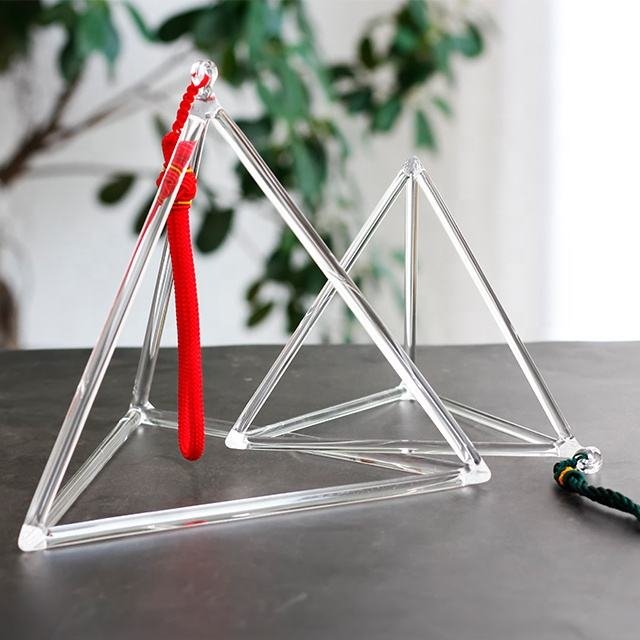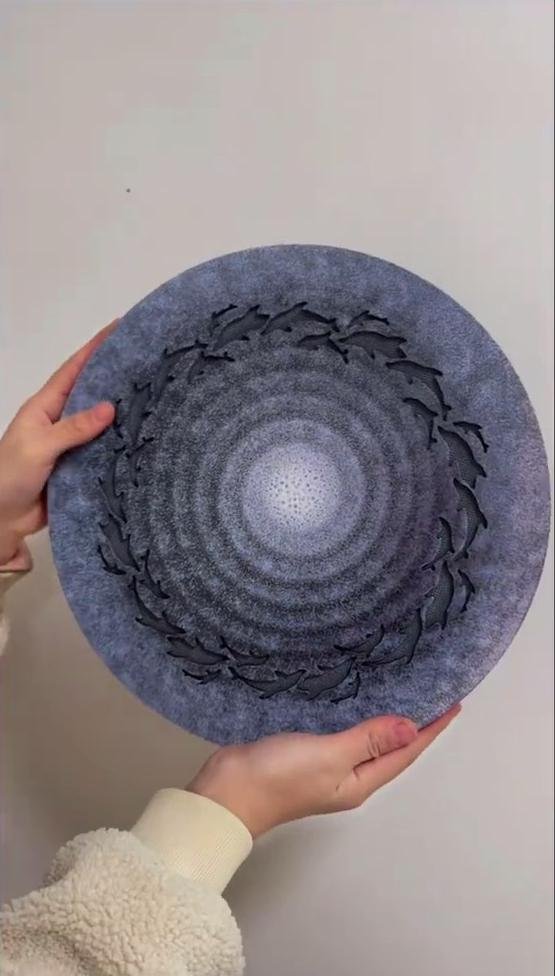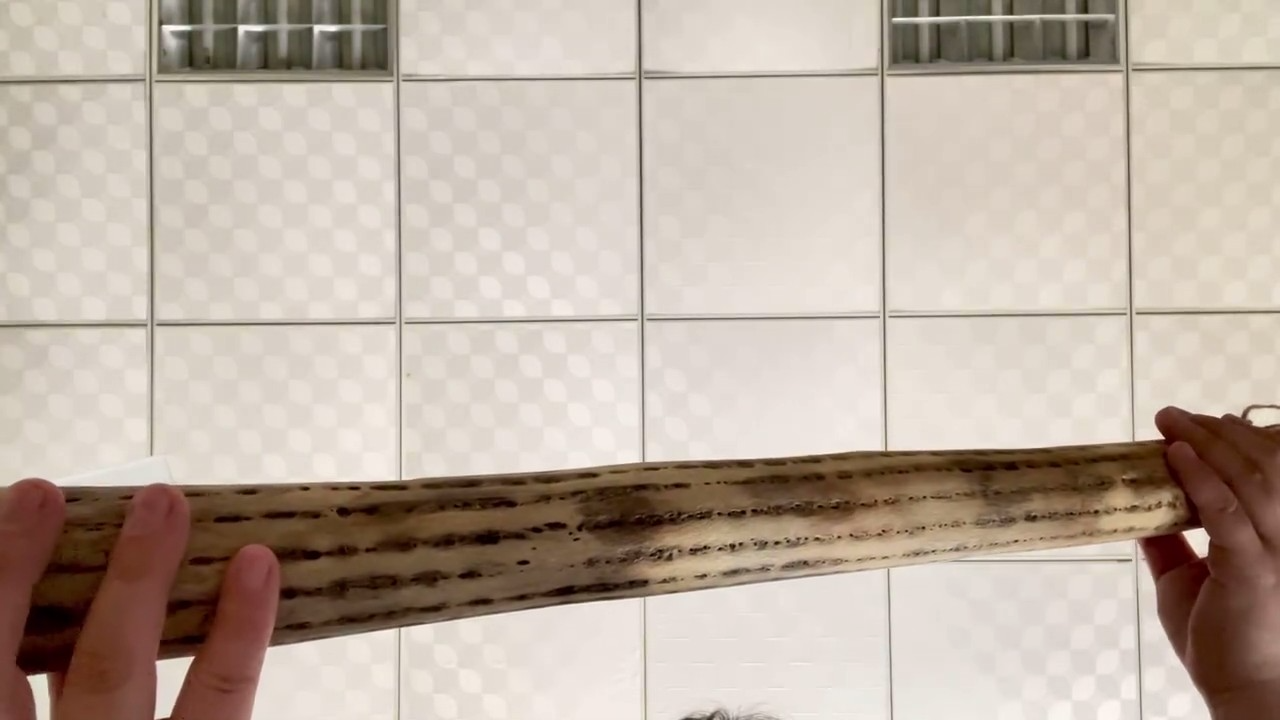The crystal pyramid represents a revolutionary approach to sound creation and vibrational healing, offering practitioners a unique instrument that combines the power of crystalline resonance with the sacred geometry of pyramid structures. Unlike traditional musical instruments that rely on conventional sound production methods, crystal pyramids harness the natural acoustic properties of quartz crystal formed into precise pyramidal shapes, creating pure, sustained tones that resonate deeply with human consciousness and promote profound states of relaxation, clarity, and inner harmony.
These remarkable instruments transcend ordinary musical applications, serving simultaneously as meditation tools, energy work facilitators, artistic expression mediums, and consciousness exploration devices. When properly crafted and skillfully played, crystal pyramids produce ethereal sounds that seem to emerge from another dimension, carrying listeners into expanded states of awareness while providing powerful support for various therapeutic and creative applications.

Construction Design and Product Classification
Basic Structural Elements
The primary crystal structure forms the foundation of every pyramid instrument, requiring precise geometric accuracy in all dimensions to achieve optimal acoustic performance and energetic properties. The four-sided pyramidal form must maintain exact angular relationships between all faces, with each triangular surface contributing specific acoustic characteristics to the overall sound production. The apex angle and base proportions directly influence the instrument’s tonal qualities, with steeper angles generally producing brighter, more focused tones while broader angles create warmer, more diffuse sound characteristics.
The base design provides crucial stability during performance while influencing the instrument’s overall acoustic behavior. Solid bases offer maximum structural integrity and enhanced low-frequency response, while hollow bases create additional resonant chambers that add complexity to the harmonic content. The base thickness affects both durability and sound transmission, with thinner bases providing more sensitive response to subtle playing techniques while thicker bases offer greater volume and projection.
Internal cavity design plays a critical role in sound amplification and tonal characteristics. The hollow interior creates a resonant chamber that amplifies vibrations generated at the crystal surface, while the cavity’s dimensions determine specific resonant frequencies that color the overall sound. Careful attention to wall thickness ensures optimal balance between structural integrity and acoustic sensitivity, with uniform thickness distribution preventing unwanted resonances or dead spots that could compromise sound quality.
Surface quality directly impacts both acoustic performance and visual appeal. Mirror-like finishes provide maximum acoustic efficiency by minimizing energy loss through surface irregularities, while also creating stunning visual effects as light reflects and refracts through the crystal structure. The precision of surface preparation affects the instrument’s ability to sustain tones, with higher quality finishes enabling longer sustain times and clearer harmonic content.
Material Types and Characteristics
Natural quartz crystal provides the traditional choice for pyramid instruments, offering unique acoustic properties that result from millions of years of geological formation. Clear quartz delivers the purest, most transparent tones with exceptional harmonic clarity and extended sustain times. The natural piezoelectric properties inherent in quartz create subtle sound amplification effects that enhance acoustic output while maintaining exceptional purity and clarity.
Colored quartz varieties introduce distinctive tonal characteristics that many practitioners find enhance specific applications or aesthetic preferences. Amethyst pyramids produce warm, slightly darker tones with enhanced mid-frequency emphasis that many find particularly soothing for meditation and relaxation applications. Rose quartz creates exceptionally gentle, soft tones with subtle warmth that supports heart-centered practices and emotional healing work. Smoky quartz generates deeper, more grounding tones with enhanced bass response that provides excellent support for stability and centering practices.
Synthetic quartz materials offer controlled acoustic properties and consistent manufacturing quality that appeals to practitioners seeking predictable performance characteristics. Laboratory-grown crystals provide superior optical clarity and acoustic uniformity while eliminating natural variations that can affect tonal consistency. The controlled growth process enables optimization of crystal structure for specific acoustic applications, resulting in instruments with enhanced sustain, improved frequency response, and more predictable tonal characteristics.
Composite materials combine different crystal types or incorporate additional elements to enhance specific performance characteristics. Hybrid construction techniques might integrate multiple quartz varieties to create complex tonal palettes, or incorporate metal elements to extend frequency range and add harmonic richness. These innovative approaches expand the sonic possibilities while maintaining the essential crystalline properties that define the pyramid’s unique acoustic character.
Size Classifications and Applications

Portable small pyramids typically measure 3-6 inches in base dimension and excel in producing higher frequency ranges that complement personal meditation practices and intimate therapeutic sessions. These compact instruments offer exceptional convenience for travel and personal practice while delivering surprisingly rich acoustic performance. Their higher pitch range makes them ideal for detail work in sound healing applications and provides excellent clarity for melodic playing techniques.
The lightweight construction and compact size make small pyramids perfect for practitioners who need portable instruments for teaching, traveling, or outdoor practice sessions. Despite their modest dimensions, quality small pyramids can produce remarkable acoustic output and sustain times that rival much larger instruments. The higher fundamental frequencies also complement other instruments in ensemble settings, providing bright harmonic content that cuts through complex musical textures.
Standard medium pyramids ranging from 6-12 inches provide balanced acoustic performance suitable for most musical and therapeutic applications. This size range offers optimal balance between portability and acoustic power, making medium pyramids the preferred choice for many practitioners. The frequency range encompasses both clear high frequencies and substantial mid-range content, enabling versatile applications from gentle meditation support to dynamic artistic performance.
Medium pyramids provide sufficient acoustic power for small to medium group sessions while remaining manageable for individual use. The tonal balance offers excellent versatility, supporting both rhythmic percussion techniques and sustained melodic passages with equal effectiveness. This size category typically offers the best value proposition, combining professional-grade performance with reasonable cost and practical convenience.
Large professional pyramids exceeding 12 inches in base dimension produce powerful acoustic output with extended low-frequency response that creates profound sonic experiences. These substantial instruments excel in group settings, large spaces, and professional performance applications where maximum acoustic impact is desired. The enhanced bass response and extended sustain times create immersive sound environments that can fill large spaces with rich, enveloping tones.
The increased mass and internal volume of large pyramids enable longer sustain times and more complex harmonic development that smaller instruments cannot achieve. Professional-grade large pyramids often incorporate advanced design features such as precision-tuned cavities, optimized wall thickness distributions, and premium surface treatments that maximize acoustic performance. These instruments represent the pinnacle of pyramid design and construction, offering uncompromising performance for serious practitioners and professional applications.
Playing Techniques and Operation Methods
Basic Striking Techniques
Mallet selection profoundly influences the tonal character and dynamic range achievable with crystal pyramids. Rubber mallets provide gentle, warm tones with gradual attack characteristics that blend smoothly into sustained resonance. The soft impact minimizes harsh transients while maximizing the crystal’s natural resonance, making rubber mallets ideal for meditative applications and gentle therapeutic work. Different rubber compounds offer varying degrees of hardness that affect tonal brightness and attack definition.
Wooden mallets create more defined attack characteristics with enhanced harmonic content that adds complexity to the initial strike sound. Hardwood mallets produce brighter, more articulated tones with crisp attack definition, while softwood mallets offer warmer, more mellow characteristics. The wood grain and density significantly influence the mallet’s tonal contribution, with different wood species providing distinctive acoustic signatures that complement various musical applications.
Metal mallets generate brilliant, penetrating tones with maximum harmonic excitement and extended sustain times. The metallic contact creates complex overtone interactions that add richness and complexity to the sound, though care must be taken to avoid excessive force that could damage the crystal surface. Different metal types produce varying tonal characteristics, with brass offering warmth, steel providing brightness, and aluminum creating clean, neutral tones.
Felt mallets produce the softest, most gentle tones with minimal attack transients and maximum emphasis on the crystal’s natural resonance. These mallets excel in applications requiring subtle dynamics and gentle sound initiation, particularly in therapeutic settings where harsh sounds might be counterproductive. The felt density affects both volume and tonal character, with denser felt providing more definition and lighter felt creating softer, more diffuse sounds.
Strike Location and Tonal Variation
The apex strike point produces the brightest, most focused tones with maximum harmonic clarity and defined attack characteristics. Striking near the pyramid’s peak emphasizes higher frequencies while minimizing lower harmonic content, creating crystalline tones that cut through ambient sound and capture attention. The apex location also provides the most efficient energy transfer, resulting in maximum volume and sustain from minimal striking force.
Side face strikes generate more complex tonal characteristics with enhanced mid-frequency content and richer harmonic development. The larger surface area distributes impact energy more broadly, creating fuller, more rounded tones with balanced frequency content. Different positions along the triangular faces produce subtle tonal variations, with strikes closer to the apex emphasizing higher frequencies while strikes nearer the base enhance lower frequency content.
Edge strikes create unique tonal effects that emphasize specific frequency ranges while producing distinctive attack characteristics. The linear contact along pyramid edges generates complex vibration patterns that create unusual harmonic interactions and unique tonal colors. Edge striking requires precise technique to achieve consistent results, but offers access to tonal possibilities unavailable through other striking methods.
Base striking produces the deepest, most grounding tones with maximum low-frequency emphasis and sustained resonance. The larger contact area and thicker crystal material at the base generate powerful fundamental frequencies with extended sustain times. Base strikes require more force to achieve adequate volume but produce profoundly satisfying tones that provide excellent foundation for harmonic layering and rhythmic work.
Advanced Friction Techniques
Friction activation using specialized implements enables continuous tone production that transforms the crystal pyramid from a percussion instrument into a sustained tone generator. Leather-wrapped friction tools provide warm, organic tones with smooth attack characteristics and natural vibrato effects. The leather surface grips the crystal smoothly while maintaining consistent contact pressure, enabling long, flowing tones that can be maintained indefinitely with proper technique.
Rubber friction implements offer predictable contact characteristics and consistent tonal response across different crystal surfaces and environmental conditions. The rubber material provides reliable grip without excessive pressure requirements, making it easier to maintain steady friction contact during extended playing sessions. Different rubber compounds produce varying tonal characteristics, with softer rubbers creating warmer tones and harder rubbers generating brighter, more defined sounds.
Wooden friction tools create distinctive organic tones with natural texture variations that add character to sustained sounds. The wood grain interacts with the crystal surface to produce subtle rhythmic variations and harmonic fluctuations that create living, breathing tones. Different wood types offer varying friction characteristics and tonal qualities, with harder woods providing more definition and softer woods creating smoother, more flowing sounds.
Silicone implements combine the advantages of rubber friction tools with enhanced durability and temperature stability that ensures consistent performance across varying environmental conditions. The synthetic material provides smooth, even contact that enables precise control over friction pressure and movement speed, resulting in highly controllable sustained tones with excellent pitch stability and harmonic clarity.
Dynamic Control and Expression
Pressure variation during friction playing enables real-time pitch and tonal control that rivals the expressiveness of traditional string instruments. Light pressure produces gentle, floating tones with subtle harmonic content, while increased pressure generates more intense, harmonically rich sounds with enhanced volume and projection. Skilled practitioners develop sensitivity to pressure relationships that enable smooth pitch bending and dynamic expression throughout sustained passages.
Movement speed control provides another dimension of expressive possibility, with faster friction speeds generally producing higher pitch emphasis and brighter tonal characteristics. Slower speeds emphasize lower frequencies and create warmer, more mellow sound qualities. Gradual speed changes enable smooth pitch transitions and dynamic effects that add musicality and emotional expression to sustained tones.
Circular versus linear friction patterns create distinctly different tonal characteristics and playing experiences. Circular motions around the pyramid’s perimeter generate smooth, even tones with stable pitch and consistent harmonic content. Linear friction across crystal faces produces more varied tonal textures with subtle pitch fluctuations and dynamic variations that add interest and complexity to sustained sounds.
Combined technique integration allows skilled players to seamlessly blend percussion and friction methods within single musical passages. Tones can be initiated with percussive strikes and smoothly transitioned to friction sustain, creating flowing musical phrases that combine the impact of percussion with the continuity of sustained tones. This hybrid approach maximizes the expressive potential of crystal pyramids while enabling sophisticated musical development.
Musical Styles and Practical Applications

Meditation Music Performance
Meditative applications require exceptional control over extremely slow tempos and sustained tones that support deep relaxation and inner focus. Players must develop internal timing sense that remains stable across extended time periods while maintaining musical momentum and listener engagement. Breath-synchronized phrasing provides natural rhythmic structure that aligns musical passages with comfortable breathing patterns, supporting both performer comfort and meditative effectiveness.
Sustained tone applications demand technical skills that enable consistent acoustic output over extended periods without fatigue or tonal degradation. Players must master friction techniques that maintain steady contact pressure and movement consistency while developing physical endurance for long playing sessions. The ability to create slowly evolving tonal landscapes requires patience and sensitivity to subtle changes in harmonic content and acoustic atmosphere.
Silence integration becomes equally important as sound production in meditative applications, with strategic pauses allowing tones to decay naturally while providing space for inner reflection and absorption. The timing of silence requires artistic sensitivity and understanding of meditation dynamics, ensuring that pauses enhance rather than interrupt the contemplative flow. Skilled practitioners learn to use silence as an active musical element that contributes to the overall meditative experience.
Environmental awareness enables players to adapt their musical approach to specific acoustic spaces and ambient conditions. Indoor environments require different techniques than outdoor settings, with players adjusting volume levels, tonal characteristics, and rhythmic patterns to complement natural acoustics and minimize unwanted interference. This adaptability ensures optimal meditative support regardless of environmental variables.
Therapeutic Sound Applications
Therapeutic applications often require precise frequency control and consistent tonal delivery that supports specific healing intentions and client needs. Practitioners must develop skills in frequency recognition and production accuracy that enable reliable therapeutic outcomes through musical intervention. Understanding of how different frequencies affect human physiology and psychology informs musical choices and playing techniques.
Client-centered adaptation requires practitioners to observe and respond to individual reactions during therapeutic sessions, adjusting musical content in real-time to optimize healing outcomes. Some clients respond better to higher frequencies while others benefit from deeper, more grounding tones. Skilled practitioners develop sensitivity to non-verbal feedback that guides musical decisions throughout therapeutic sessions.
Session structure planning involves designing musical progressions that support therapeutic goals while maintaining client comfort and engagement. Typical sessions might begin with gentle, settling tones that promote relaxation, progress through more active frequencies that address specific issues, and conclude with integrative sounds that help clients process and retain therapeutic benefits. This systematic approach ensures comprehensive therapeutic support while maintaining musical coherence.
Integration with other modalities enhances therapeutic effectiveness by combining crystal pyramid sounds with complementary healing approaches. The pure tones provide excellent accompaniment for massage, energy work, guided visualization, and other therapeutic techniques. Practitioners often coordinate with other healing professionals to create comprehensive treatment approaches that maximize client benefits.
Artistic Performance and Creation
Contemporary composition techniques enable crystal pyramids to participate in modern musical contexts while respecting their unique acoustic characteristics. Minimalist compositional approaches particularly complement the instrument’s sustained tone capabilities, with gradually evolving musical structures that showcase the pyramid’s capacity for subtle harmonic development and atmospheric creation.
Ensemble integration requires understanding how crystal pyramid tones interact with other instruments in mixed musical settings. The pure harmonic content blends beautifully with string instruments, woodwinds, and vocals while providing unique textural elements that enhance overall ensemble sound. Careful attention to frequency relationships ensures that pyramid parts complement rather than compete with other musical elements.
Extended technique development pushes beyond traditional playing methods to explore unconventional sounds and effects that expand artistic possibilities. Experimental approaches might include using multiple friction implements simultaneously, exploring unusual strike locations, or incorporating electronic processing that enhances and transforms the natural crystal sounds. These innovations maintain respect for the instrument’s essential character while opening new creative territories.
Cross-cultural fusion combines musical traditions from diverse backgrounds in ways that celebrate cultural diversity while creating coherent artistic statements. Crystal pyramids adapt naturally to various musical traditions, from Eastern drone-based music to Western harmonic progressions, enabling authentic fusion approaches that respect source traditions while creating innovative musical expressions.
Purchase Guide and Product Evaluation
Needs Assessment and Requirements
Purpose clarification represents the crucial first step in selecting appropriate crystal pyramid instruments, as different applications demand specific characteristics and capabilities. Personal meditation practice requires smaller, more portable instruments with gentle tonal qualities that support introspection and relaxation. Professional therapeutic work demands larger instruments with greater acoustic power and extended frequency ranges that can effectively serve diverse client needs in various environmental settings.
Artistic performance applications need instruments with maximum expressive range and dynamic capabilities that enable sophisticated musical development. Professional artists require instruments that can project clearly in performance spaces while offering subtle control possibilities for nuanced musical expression. The visual appeal becomes equally important in performance contexts, with aesthetic considerations influencing instrument selection alongside acoustic properties.
Skill level assessment helps determine appropriate instrument complexity and cost investment. Beginning practitioners benefit from simpler, more affordable instruments that provide excellent learning platforms without overwhelming complexity or excessive expense. Advanced players require sophisticated instruments that offer maximum expressive potential and professional-grade performance capabilities that support artistic development and career advancement.
Budget planning must balance desired features with financial constraints while considering long-term investment value. Quality instruments represent significant investments that provide years of reliable service and artistic satisfaction. Understanding the relationship between cost and performance helps buyers make informed decisions that maximize value while meeting specific needs and requirements.
Quality Evaluation Standards
Visual inspection reveals crucial information about manufacturing quality and overall instrument condition. Surface examination should identify any chips, cracks, or irregularities that could affect acoustic performance or structural integrity. The crystal clarity indicates material quality, with higher transparency generally correlating with better acoustic properties and more attractive visual appearance.
Geometric accuracy assessment requires checking that all angles and proportions conform to proper pyramid specifications. Measurement tools can verify base dimensions, height relationships, and angular accuracy that directly influence acoustic performance. Asymmetries or geometric irregularities may create tonal imbalances or unwanted resonances that compromise sound quality.
Acoustic testing provides the most important evaluation criteria, requiring careful listening to assess tonal quality, sustain times, and harmonic content. Quality instruments produce clear, pure tones without buzzes, rattles, or unwanted noise artifacts. Sustain duration indicates crystal quality and manufacturing precision, with longer sustain times generally indicating superior materials and construction.
Surface finish quality affects both acoustic performance and visual appeal, requiring examination under good lighting conditions to assess polish quality and surface uniformity. Mirror-like finishes indicate precision manufacturing and provide optimal acoustic efficiency, while surface irregularities suggest inferior manufacturing quality that may compromise performance and durability.
Price Analysis and Value Assessment
Entry-level instruments provide basic functionality at accessible price points that enable beginners to explore crystal pyramid capabilities without excessive financial commitment. These instruments typically use standard materials and manufacturing processes that deliver adequate performance for learning and casual use. While lacking the refinement of premium instruments, quality entry-level pyramids provide excellent introduction to the instrument family.
Mid-range products offer enhanced performance and build quality that justifies higher prices through superior materials, improved manufacturing precision, and better acoustic characteristics. These instruments serve serious practitioners who require reliable performance and enhanced capabilities without the premium costs associated with top-tier products. Mid-range pyramids typically provide the best value proposition for most users.
Premium instruments justify higher costs through exceptional materials, precision manufacturing, superior acoustic performance, and often artistic or collectible value. These instruments use the finest crystal materials, achieve the highest manufacturing standards, and deliver uncompromising performance that satisfies the most demanding applications. Premium pyramids often appreciate in value while providing lifetime satisfaction for serious practitioners.
Custom instruments command premium prices but offer personalized specifications that perfectly match individual requirements and preferences. Custom work enables specific size requirements, material selections, acoustic tuning, and aesthetic treatments that create unique instruments tailored to particular applications. The investment in custom work often provides superior long-term satisfaction compared to compromise choices.
Crafting Process and Quality Control
Manufacturing Workflow
Material selection begins the manufacturing process with careful evaluation of raw crystal quality, clarity, and acoustic properties. Premium instruments require flawless crystal material with exceptional transparency and uniform structure throughout. The crystal orientation must align with optimal acoustic axes to maximize resonance and harmonic development. Quality manufacturers maintain strict material standards that ensure consistent acoustic performance across all instruments.
Design calculation establishes precise dimensions and geometric relationships that determine the instrument’s acoustic characteristics and visual proportions. Computer-aided design tools enable exact specification of all angles, dimensions, and surface relationships while predicting acoustic behavior and optimizing performance parameters. These calculations guide all subsequent manufacturing operations and quality control measurements.
Rough shaping operations remove excess material and establish basic pyramid geometry using diamond-cutting tools and precision machinery. Computer-controlled equipment ensures geometric accuracy while minimizing material waste and manufacturing time. The rough shaping must maintain adequate material thickness for subsequent finishing operations while achieving precise angular relationships and dimensional accuracy.
Precision finishing involves progressive polishing operations that achieve mirror-like surface quality essential for optimal acoustic performance. Multiple polishing stages use increasingly fine abrasives to eliminate surface irregularities and achieve optical-quality finishes. The final polishing determines both acoustic efficiency and visual appeal, requiring exceptional skill and attention to detail.
Quality Assurance Procedures
Dimensional verification uses precision measurement tools to confirm that all geometric specifications meet design requirements within specified tolerances. Coordinate measuring machines can verify complex three-dimensional relationships while ensuring that angular accuracy meets acoustic requirements. Any dimensional discrepancies require correction or rejection to maintain quality standards.
Acoustic testing evaluates fundamental frequency accuracy, harmonic content, sustain duration, and overall tonal quality using standardized procedures and measurement equipment. Professional-grade instruments must meet specific acoustic performance standards that ensure consistent quality across production runs. Acoustic testing may identify instruments requiring additional tuning or processing to meet performance requirements.
Surface quality inspection examines finish quality, optical clarity, and structural integrity using specialized lighting and magnification equipment. Surface defects that affect acoustic performance or visual appeal require correction through additional polishing or instrument rejection. The inspection process ensures that only instruments meeting the highest quality standards reach customers.
Performance validation involves playing tests by experienced practitioners who evaluate acoustic characteristics, playing response, and overall musical quality. Human evaluation complements technical measurements by assessing subjective qualities that affect musical expression and user satisfaction. This final evaluation ensures that instruments meet both technical specifications and artistic requirements.
Quality Control Standards
Manufacturing tolerances specify acceptable variations in dimensions, surface quality, and acoustic parameters that maintain consistent performance across production runs. Tight tolerances ensure that instruments meet design specifications while allowing for normal manufacturing variations that don’t compromise quality. Quality control systems monitor all critical parameters and reject instruments that exceed tolerance limits.
Performance benchmarks establish minimum standards for acoustic output, sustain duration, frequency accuracy, and harmonic content that all instruments must achieve. These benchmarks ensure consistent quality while providing objective criteria for evaluating manufacturing success. Regular benchmark testing validates that manufacturing processes maintain quality standards over time.
Documentation requirements track manufacturing details, quality measurements, and inspection results for each instrument throughout the production process. Complete documentation enables quality traceability and provides valuable feedback for process improvement initiatives. Documentation also supports warranty service and customer support activities.
Continuous improvement programs analyze quality data and customer feedback to identify opportunities for enhancing manufacturing processes and product quality. Regular review of quality metrics guides investment in improved equipment, training, and process refinement that maintains competitive advantage and customer satisfaction.
Maintenance and Care Guidelines
Routine Cleaning Procedures
Daily maintenance involves gentle cleaning with soft, lint-free cloths that remove fingerprints, dust, and other surface contaminants without scratching the crystal surface. Microfiber cloths provide excellent cleaning effectiveness while minimizing scratch risk, and should be kept clean and free from abrasive particles that could damage the crystal finish. Cleaning frequency depends on use intensity and environmental conditions.
Deep cleaning procedures address accumulated dirt and residues that normal cleaning cannot remove. Specialized crystal cleaning solutions designed for optical applications provide safe, effective cleaning without chemical damage to the crystal structure. Ultrasonic cleaning baths offer thorough cleaning for instruments requiring restoration, though care must be taken to avoid damage from excessive vibration.
Water quality considerations become important when using liquid cleaning methods, as mineral deposits from hard water can affect surface clarity and acoustic performance. Distilled or deionized water prevents mineral spotting while ensuring that cleaning solutions work effectively. Thorough drying prevents water spots and eliminates moisture that could encourage bacterial growth.
Cleaning tool selection affects both cleaning effectiveness and surface protection, requiring soft materials that remove contaminants without surface damage. Natural materials like cotton and silk provide gentle cleaning action, while synthetic microfibers offer superior dirt removal capabilities. Cleaning tools must be maintained in clean condition to prevent contamination transfer.
Storage and Environmental Protection
Temperature control prevents thermal stress that could crack crystal structures or affect acoustic properties. Rapid temperature changes pose the greatest risk, requiring gradual transitions when moving instruments between different temperature environments. Storage areas should maintain stable temperatures within comfortable ranges that prevent thermal cycling damage.
Humidity management protects instruments from moisture-related problems while maintaining optimal acoustic properties. Excessive humidity can encourage bacterial growth and mineral deposits, while very low humidity may affect some adhesive materials used in construction. Moderate humidity levels between 30-50% provide optimal conditions for long-term storage.
Light protection prevents ultraviolet degradation of any organic materials used in construction while protecting crystal clarity from photochemical effects. Direct sunlight should be avoided during storage, with diffused lighting providing adequate illumination for display purposes. UV-filtering storage containers offer additional protection for valuable instruments.
Vibration isolation protects instruments from physical damage during storage and transport while preventing acoustic interference that could affect nearby activities. Soft padding materials absorb vibrations while providing cushioning protection against impacts. Storage locations should avoid areas with excessive mechanical vibration from equipment or foot traffic.
Performance Maintenance
Acoustic monitoring involves regular assessment of sound quality, sustain duration, and frequency accuracy to detect performance degradation requiring maintenance attention. Changes in acoustic characteristics may indicate structural problems, surface contamination, or other issues requiring professional attention. Regular acoustic testing establishes performance baselines for comparison over time.
Surface restoration addresses minor scratches, cloudiness, or other surface imperfections that affect acoustic performance or visual appeal. Professional polishing services can restore original surface quality when home cleaning methods prove insufficient. Surface restoration requires specialized equipment and expertise to avoid damage during the restoration process.
Structural inspection identifies potential problems such as stress cracks, impact damage, or joint separation that could affect instrument integrity or safety. Regular inspection enables early detection of problems when repair costs remain reasonable and success probability remains high. Professional assessment may be required for valuable instruments or complex damage evaluation.
Professional servicing provides comprehensive maintenance and restoration services that exceed home maintenance capabilities. Professional services include acoustic tuning, surface restoration, structural repair, and performance optimization that maintains instruments in optimal condition. Regular professional maintenance extends instrument life while preserving acoustic performance and visual appeal.
The crystal pyramid represents far more than a musical instrument; it embodies the convergence of sacred geometry, crystalline acoustics, and artistic expression in a form that opens new territories for creative exploration, therapeutic application, and consciousness development. Through its unique combination of geometric perfection and crystalline resonance, this remarkable instrument offers unlimited possibilities for those willing to explore its depths and master its subtleties.
Technical mastery encompasses multiple playing approaches that unlock different aspects of the instrument’s acoustic personality and expressive potential. Percussion techniques provide rhythmic foundation and dynamic impact, while friction methods enable sustained tones and flowing musical phrases that rival traditional string instruments in their expressiveness. The integration of these approaches creates sophisticated playing possibilities that transcend simple sound production to achieve genuine musical artistry.
For practitioners seeking authentic transformation through sound, crystal pyramids offer pathways to experiences that transcend ordinary musical performance to touch realms of healing, meditation, and consciousness expansion. The pure tones and sacred geometric resonance create powerful tools for personal development while providing unique contributions to artistic expression and creative exploration that reflect the highest potentials of human creativity and spiritual development.






